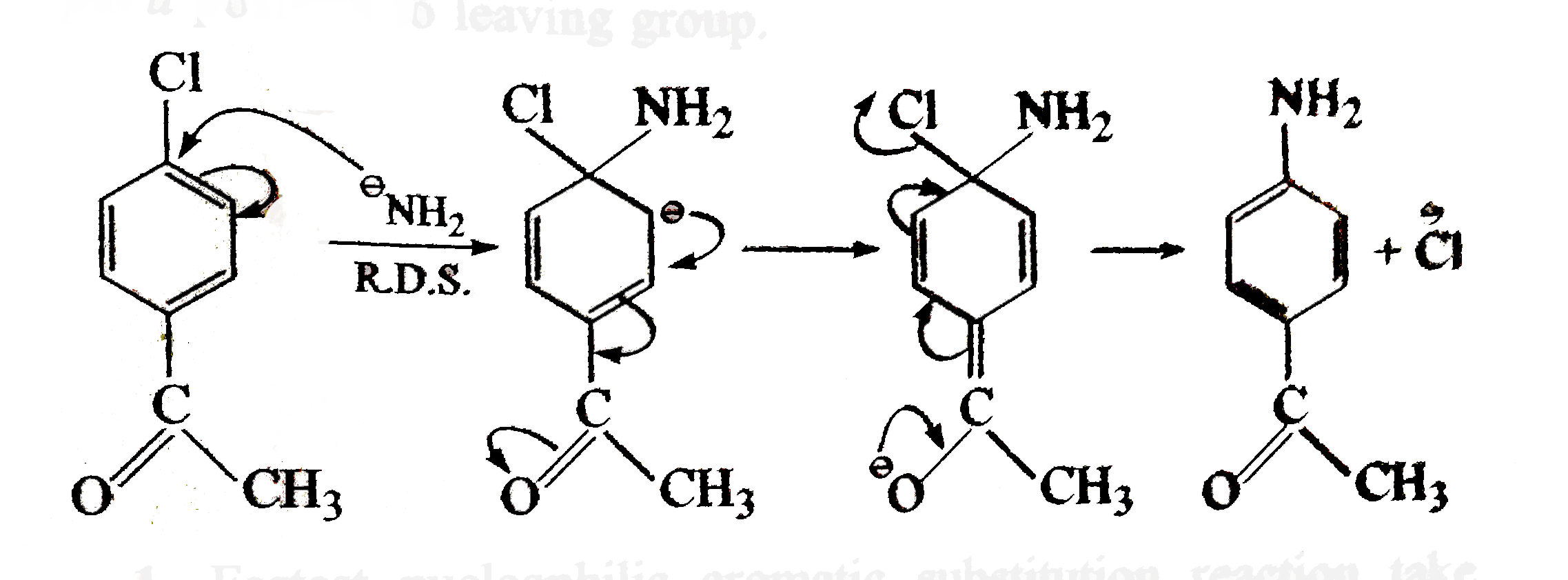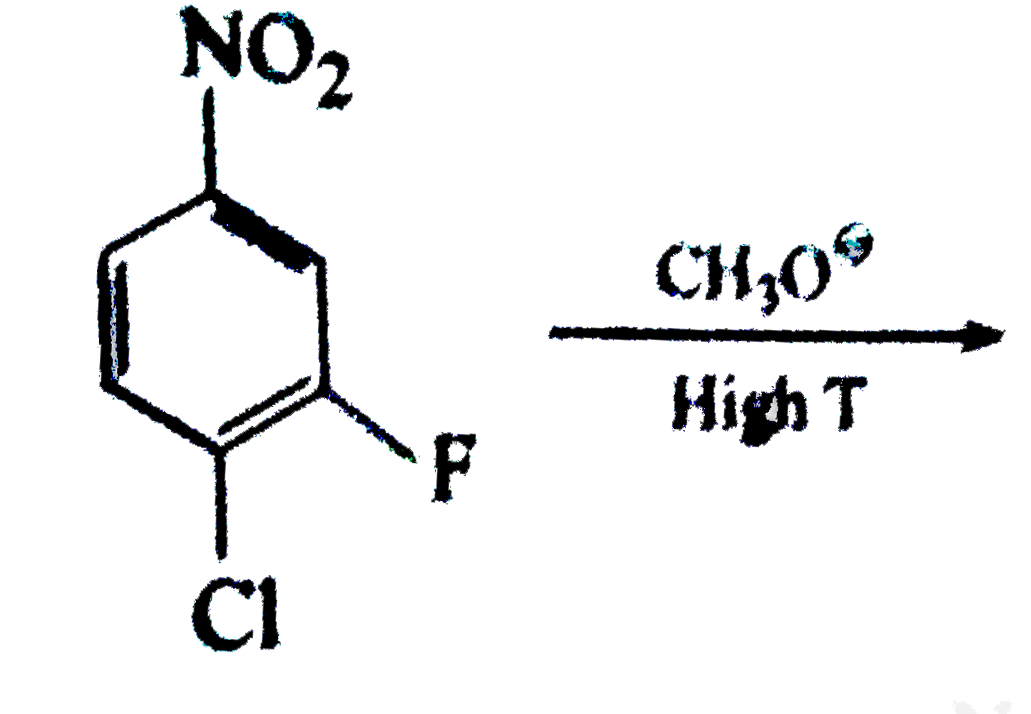Althought epoxides do not contain a good leaving group, they contains a strained three membered ring with polar bonds. Nucleophilic attack opens the strained three membered ring making it favorable process even with the poor leaving group.

This reaction occurs readily with strong nucleophilic , and with acids like HZ, where Z is nucleophilic atom.

Find out the correct product of the reaction





The correct Answer is:B
Step by step video, text & image solution for Althought epoxides do not contain a good leaving group, they contains a strained three membered ring with polar bonds. Nucleophilic attack opens the strained three membered ring making it favorable process even with the poor leaving group. This reaction occurs readily with strong nucleophilic , and with acids like HZ, where Z is nucleophilic atom. Find out the correct product of the reaction by Chemistry experts to help you in doubts & scoring excellent marks in Class 12 exams.
Updated on:21/07/2023Similar Questions
Attack by a strong nucleophile such as CH3OΘ (Methoxide ion ) on an epoxide occurs at the least hindered carbon similar to an SN2 reaction

Attack by a weak nucleophile such as MeOH . Can occur only when the epoxide has been protonated so that a better leaving group is formed under acidic condition weak nucleophile attacks more substituted carbon to give final product .
What would be the major product of the given transformation ?

View SolutionFor a typical nucleophilic aromatic subsitution reaction to take place.
(1) Nucleophilic atom should be of oxygen, nitrogen or sulphur.
(2) Leaving group should be halide .
(3) There should be strong electron withdarwing at ortho and para position to leaving group.

Find out correct product of following reaction :

View Solution
Knowledge Check
Althought epoxides do not contain a good leaving group, they contains a strained three membered ring with polar bonds. Nucleophilic attack opens the strained three membered ring making it favorable process even with the poor leaving group.

This reaction occurs readily with strong nucleophilic , and with acids like HZ, where Z is nucleophilic atom.


Find out major product of reaction:A B
B C
C DNone of these
DNone of theseAlthought epoxides do not contain a good leaving group, they contains a strained three membered ring with polar bonds. Nucleophilic attack opens the strained three membered ring making it favorable process even with the poor leaving group.

This reaction occurs readily with strong nucleophilic , and with acids like HZ, where Z is nucleophilic atom.


What would be the major product of reaction?A B
B C
C D
D
For a typical nucleophilic aromatic substitution reaction to take place .
1. Nucleophilic atom should be of oxygen nitrogen or sulphur.
2. Leaving groups should be halide.
3. There should be strong electron withdrawing at ortho and para position to leaving group.

Find out correct product of following reaction
 A
A B
B C
C D
D
Ring-opening reactions of epoxides can proceed by either SN2 or SN1 mechanisms, depending on the nature of the epoxide and on the reaction conditions. If the epoxide is asymmetric, the structure of the product will very according to which mechanisms dominates. When an symmetric epoxide undergoes solvolysis in basic methanol, ring-opening occurs by and SN2 mechanisms, and the less subsitution carbon is the site of nucleophilic attack. Conversely, when solvolysis occurs in acidic methanol, the reaction occurs by a mechanisms with substantial SN1 character, and the more substituted carbon is the site of attack. These are both good examples of regioselective reactions, examine the basic, SN2 case first. The leaving group is an alkoxide anion, because there i s not acid avaialble to protonate the oxygen prior to ring opening. An alkoxide is a poor leaving group, and thus the ring is unlikely to open without a'push' from the nucleophile. Like in other SN2 reactions, nucleophilic attack takes place from the backside, resulting in inversion t the electrophilic carbon. The best way to depict the acid-catalyzed epoxide ring-opening reaction is as a hybrid, or cross, between an SN2 and SN1 mechanism. First, the oxygen is protonated, creating a good leaving group. Then the carbon-oxygen bond begins to break and positive charge begins to build up on the more substituted carbon. answer the following based on the above :

The product formed after nucleophilic attack and mild hydrolysis is
View SolutionRing-opening reactions of epoxides can proceed by either SN2 or SN1 mechanisms, depending on the nature of the epoxide and on the reaction conditions. If the epoxide is asymmetric, the structure of the product will very according to which mechanisms dominates. When an symmetric epoxide undergoes solvolysis in basic methanol, ring-opening occurs by and SN2 mechanisms, and the less subsitution carbon is the site of nucleophilic attack. Conversely, when solvolysis occurs in acidic methanol, the reaction occurs by a mechanisms with substantial SN1 character, and the more substituted carbon is the site of attack. These are both good examples of regioselective reactions, examine the basic, SN2 case first. The leaving group is an alkoxide anion, because there i s not acid avaialble to protonate the oxygen prior to ring opening. An alkoxide is a poor leaving group, and thus the ring is unlikely to open without a'push' from the nucleophile. Like in other SN2 reactions, nucleophilic attack takes place from the backside, resulting in inversion t the electrophilic carbon. The best way to depict the acid-catalyzed epoxide ring-opening reaction is as a hybrid, or cross, between an SN2 and SN1 mechanism. First, the oxygen is protonated, creating a good leaving group. Then the carbon-oxygen bond begins to break and positive charge begins to build up on the more substituted carbon. answer the following based on the above :

View SolutionAromatic hydrocarbons are highly unsaturated molecules but behave like saturated hydrocarbons. Those which contain a benzene ring are called benzenoids but those which contain some highly unsaturated ring other than benzene are called non-benzenoids. Their aromatic character can be ascertained through Hückel rule. Aromatic hydrocarbons are, however, more reactive than alkanes but are less reactive than alkenes and alkynes. The lower reactivity of arenes is because of the extra stability associated with these molecules due to delocalization of -electrons. Their stability is measured in terms of resonance energy which can be estimated from either heat of combustion or heat of hydrogenation data. They normally undergo electrophilic substitution reactions. In presence of a Lewis acid catalyst, nuclear halogenation occurs but in absence of Lewis acid catalyst and in presence of light, halogens add to the benzene ring. If an aromatic hydrocarbon contains an alkyl side chain, then in presence of heat/light side chain halogenation occurs in preference to addition of halogens to the benzene ring. The reactivity of aromatic hydrocarbons towards electrophilic substitution reactions depends upon the electron density in the benzene ring. Electron-donating groups favour while electron-withdrawing groups retard these reactions. Orientation of electrophilic substitution reactions is governed by the nature of the substituent already present in the ring. Although aromatic hydrocarbons are resistant to oxidising agents (KMnO4,K2Cr2O7, etc.) they do undergo ozonolysis.
In the reaction of C6H5Y, the major product ( gt 60%) is m-isomer , so the group Y is
View SolutionAlcohols are converted to tosylates by treatment with p-toluence sulfonyl chloride (TsCl) in the presence of pyridine. This overall process converts a poor leaving group (ӨH) into good one (ӨTs). A tosylate is a good leaving group its conjugates acid p-touence sulfonic acid is strong acid. Beacuse alkyl tosylates have food leaving groups, they undergo both nucleophilic substitution and β−elimination.

Find the major product of the following reaction:

View SolutionIntramolecular aldol condensation :
The aldol condensation also offer a convenient way to synthesize molecules with five and six membered ring.This can be done by an intramolecular aldol condensation using a dialdehyde, a keto aldehyde or a diketone as the substrate.The major product is formed by the attack of the enolate from the ketone side of the molecule that adds to the aldehyde group.The reason the aldehyde group undergoes addition preferentially may arise from the greater reactivity of aldehyde towards nucleophilic addition.In reaction of this type five membered rings from far more readily than seven membered rings and six membered rings are more favourable than four or eight membered rings when possible.
The true statement about the major product of CH3−O∣∣C−CH2−CH2−CH2−CH2−O∣∣C−H in reaction with aq.NaOH followed by heating is.
View Solution
